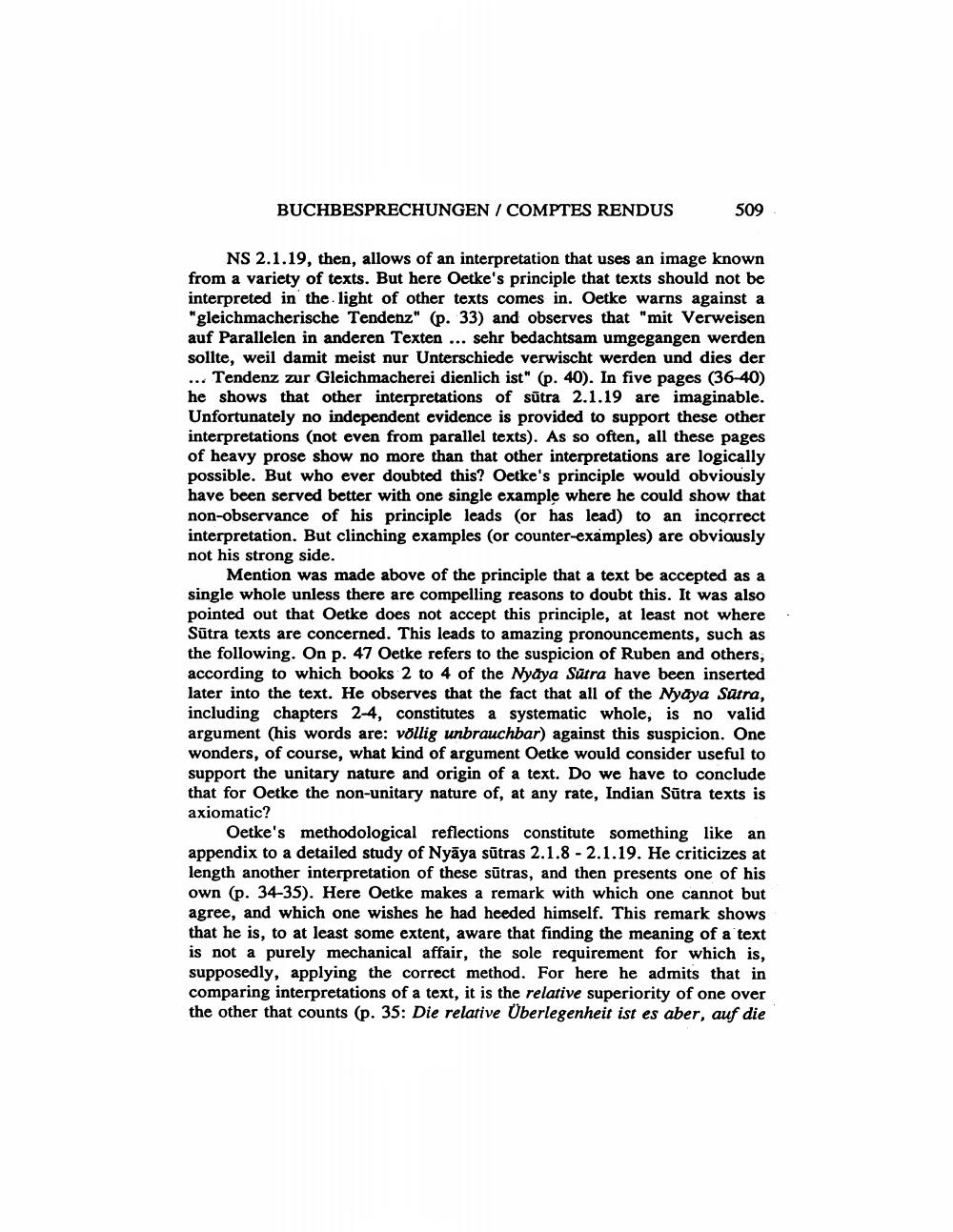________________
BUCHBESPRECHUNGEN I COMPTES RENDUS
509
NS 2.1.19, then, allows of an interpretation that uses an image known from a variety of texts. But here Oetke's principle that texts should not be interpreted in the light of other texts comes in. Oetke warns against a "gleichmacherische Tendenz" (p. 33) and observes that "mit Verweisen auf Parallelen in anderen Texten ... sehr bedachtsam umgegangen werden sollte, weil damit meist nur Unterschiede verwischt werden und dies der ... Tendenz zur Gleichmacherei dienlich ist" (p. 40). In five pages (36-40) he shows that other interpretations of sūtra 2.1.19 are imaginable. Unfortunately no independent evidence is provided to support these other interpretations (not even from parallel texts). As so often, all these pages of heavy prose show no more than that other interpretations are logically possible. But who ever doubted this? Oetke's principle would obviously have been served better with one single example where he could show that non-observance of his principle leads (or has lead) to an incorrect interpretation. But clinching examples (or counter-examples) are obviously not his strong side.
Mention was made above of the principle that a text be accepted as a single whole unless there are compelling reasons to doubt this. It was also pointed out that Oetke does not accept this principle, at least not where Sūtra texts are concerned. This leads to amazing pronouncements, such as the following. On p. 47 Oetke refers to the suspicion of Ruben and others, according to which books 2 to 4 of the Nyaya Sutra have been inserted later into the text. He observes that the fact that all of the Nyāya Satra, including chapters 2-4, constitutes a systematic whole, is no valid argument (his words are: völlig unbrauchbar) against this suspicion. One wonders, of course, what kind of argument Oetke would consider useful to support the unitary nature and origin of a text. Do we have to conclude that for Oetke the non-unitary nature of, at any rate, Indian Sūtra texts is axiomatic?
Oetke's methodological reflections constitute something like an appendix to a detailed study of Nyāya sūtras 2.1.8 - 2.1.19. He criticizes at length another interpretation of these sūtras, and then presents one of his own (p. 34-35). Here Oetke makes a remark with which one cannot but agree, and which one wishes he had heeded himself. This remark shows that he is, to at least some extent, aware that finding the meaning of a text is not a purely mechanical affair, the sole requirement for which is, supposedly, applying the correct method. For here he admits that in comparing interpretations of a text, it is the relative superiority of one over the other that counts (p. 35: Die relative Überlegenheit ist es aber, auf die




